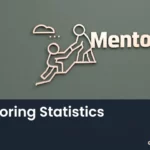
Can Women Breaking the Glass Ceiling? The struggle of Katharine Graham is an endeavor to make herself accepted in a male-dominant world more than managing a media giant. She started to head the Washington Post in the year of 1969 by reason of her husband’s death but it is completely her success to become the first woman executive on Fortune 500 CEO list.
Before the very 45 years, Icelander women went on work stoppage on the date of October 24, 1975 for protesting the income inequality and unfair employment practices. Ninety percent of the woman population in Iceland had participated this action.[1] Soon after that wide scale protest, Icelander women attained a new law on equal payment.[2] However, in despite of the elapsed time, today the women in another country of the world, in Switzerland are protesting for the right of equal income.[3] In the last half century, the women earn approximately 79 cents for every one dollar earned by the men in America only because of that they have a different gender even though they do the same work.[4]
What are these data indicating?
It has been placing glass ceilings which hinder the women in advancing in their careers ever since they participated actively in the business life. These glass ceilings restrain women from reaching high ranks in their work life and in politics. Sure, there are women who break the glass ceiling and work on the top ranks but they are few in number. The fact that there are insufficient number of women executives who can be role models for the women continuously reproduces the glass ceiling barrier. According to a research conducted by McKinsey with 64 thousand people who work in 279 American companies in the year of 2018, while the rates of the women and the men are the same on the entry level, only 23% of the C level executives are women.[5]
They face different challenges than men during their careers. Because of the idea which stems from the patriarchal culture that successful executives can only be found among the men, the women can rise to an upper position only through a major struggle. Obstacles such as the company’s promotion policy, career development opportunities, communication style and favored leadership style are only a few of the glass ceilings which have been encountered by the women during their work life.
There are many ways for supporting women in reaching upper positions. When the mentorship relation is built in compliance with the needs of the mentors and the mentees, it is a priceless tool for helping women in passing through the glass ceiling. However, it is not easy for women to reach the mentorship as it is easy for men. Also, they have been gaining more benefit from the mentorship process.[6] According to the study conducted by Accenture with 2.907 young professionals under 30 years old who have a working life for at least five years, only half of the women can reach the mentorship.[7]
Why is mentorship important for breaking the glass ceiling?
Individual Achievements
Mentorship is a developmental relation that is career-focused and has a psychosocial function. It is not possible to break all the glass ceilings in one day, therefore mentorship relation is a long time journey. Those who are aware of the glass ceiling and want to change this can achieve the following things by mentoring:
- They protect the mentee from being exposed to discrimination,
- They provide the mentee to build self-confidence,
- They encourage the mentee for protecting her/his rights better.
The benefits of this process for the mentors are:
- It improves their ability for empathy,
- It enables them to see how their actions are perceived by their subordinates,
- It provides an opportunity to them for reviewing their approaches about gender roles,
- It helps them for evaluating the employee performances independently from the gender.
Corporate Achievements
In the mentorship process, the Mentors can have knowledge about different departments of the company through their interviews with the mentees, therefore they can experience the glass ceiling through the eyes of the mentees. They find an opportunity to evaluate the practices of the company about its promotion process through different perspectives. This can be resulted for the company to review its practices and even to make changes about its promotion process.
[1] Johnson, M.E. “Women in Iceland.” Doctoral thesis, Durham University, 1984. Retrieved from https://core.ac.uk/download/pdf/108401.pdf
[2] Einarsdóttir, T. “The Policy on Gender Equality in Iceland.” Directorate General Policies Policy Department. 2010 Retrieved from http://www.europarl.europa.eu/document/activities/cont/201107/20110725ATT24624/20110725ATT24624EN.pdf
[3] Fox, K. “Women across Switzerland are on strike. They’re protesting the gender pay gap.”CNN. June,14 2019. Retrieved from https://edition.cnn.com/2019/06/14/business/switzerland-women-protest-strike-gender-inequality-intl/index.html
[4] Mlambo-Ngcuka, P. “Equal Pay Matters.” April, 2016. https://www.unwomen.org/en/news/stories/2016/4/equal-pay-matters
[5] Krivkovich, A. et al. “Women in the Workplace 2018.” October 2018. https://www.mckinsey.com/featured-insights/gender-equality/women-in-the-workplace-2018
[6] Schipani, C. et al. Women and Leadership: The Role of Mentoring and Networking. 2008. Retrieved from https://deepblue.lib.umich.edu/bitstream/handle/2027.42/61158/1117_CSchipani.pdf?sequence=1&isAllowed=y
[7] King, M. Women “Hit A Glass Ceiling Early In Their Careers, Here’s How To Break It.” Forbes. Dec 5, 2018. Retrieved from https://www.forbes.com/sites/michelleking/2018/12/05/women-hit-a-glass-ceiling-early-in-their-careers-heres-how-to-break-it/#31c0e1fd74ed


